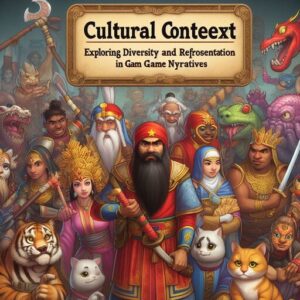
Narrative immersion in video games involves creating compelling and memorable storytelling experiences that deeply engage players and draw them into the game world. By crafting rich narratives, developing immersive environments, and creating dynamic characters, game developers can create experiences that captivate players and leave a lasting impression. In this article, we explore the concept of narrative immersion in game design and examine strategies for creating memorable experiences that resonate with players.
The Power of Narrative Immersion
Narrative immersion is a powerful tool for game developers, allowing them to create experiences that transcend entertainment and become deeply meaningful and impactful. By immersing players in rich and engaging narratives, developers can evoke a wide range of emotions, foster empathy and understanding, and create experiences that stay with players long after they have finished playing. Narrative immersion is a key component of successful game design, offering players the opportunity to explore new worlds, inhabit different roles, and experience stories in ways that are unique to the medium of video games.

Part 1: Crafting Compelling Narratives
Character-Driven Stories
Character-driven stories involve creating narratives that focus on the development and growth of dynamic and relatable characters. Developers craft characters with depth, complexity, and authenticity, giving players opportunities to empathize with their struggles, motivations, and relationships. By placing characters at the heart of the narrative, developers create opportunities for players to become emotionally invested in the story and its outcome, enhancing their immersion and engagement in the game world.
Evocative Themes and Motifs
Evocative themes and motifs involve exploring universal themes and symbols that resonate with players on a deeper level. Developers incorporate themes such as love, loss, identity, and redemption into their storytelling, using symbols and imagery to evoke powerful emotions and associations. By embracing evocative themes and motifs, developers create narratives that resonate with players on a personal and emotional level, fostering empathy, introspection, and reflection.
Part 2: Building Immersive Environments
Detailed World-Building
Detailed world-building involves creating immersive and believable game worlds that feel rich, vibrant, and alive. Developers design environments with intricate details, dynamic weather systems, and interactive elements that bring the game world to life. By immersing players in a fully realized and immersive environment, developers create opportunities for exploration, discovery, and immersion in the game world.
Atmospheric Sound Design
Atmospheric sound design involves using sound effects, music, and ambient noise to enhance the mood and atmosphere of the game world. Developers create immersive soundscapes that reflect the setting, tone, and themes of the narrative, using sound to evoke emotions, build tension, and create a sense of presence. By embracing atmospheric sound design, developers create opportunities for players to become fully immersed in the game world, enhancing their engagement and emotional connection to the narrative experience.
Part 3: Dynamic Character Interactions
Meaningful Choices and Consequences
Meaningful choices and consequences involve giving players agency over the outcome of the narrative through their actions and decisions within the game. Developers design branching paths, multiple endings, and interactive dialogue options that allow players to shape their own unique storytelling experience. By embracing meaningful choices and consequences, developers create opportunities for players to explore different paths and outcomes, fostering a sense of agency and ownership over the narrative.
Dynamic Character Relationships
Dynamic character relationships involve creating dynamic and evolving relationships between characters within the game world. Developers design characters with their own personalities, motivations, and goals, allowing for complex and nuanced interactions between characters. By embracing dynamic character relationships, developers create opportunities for players to form meaningful connections with the characters and influence the course of the narrative through their interactions and choices.

